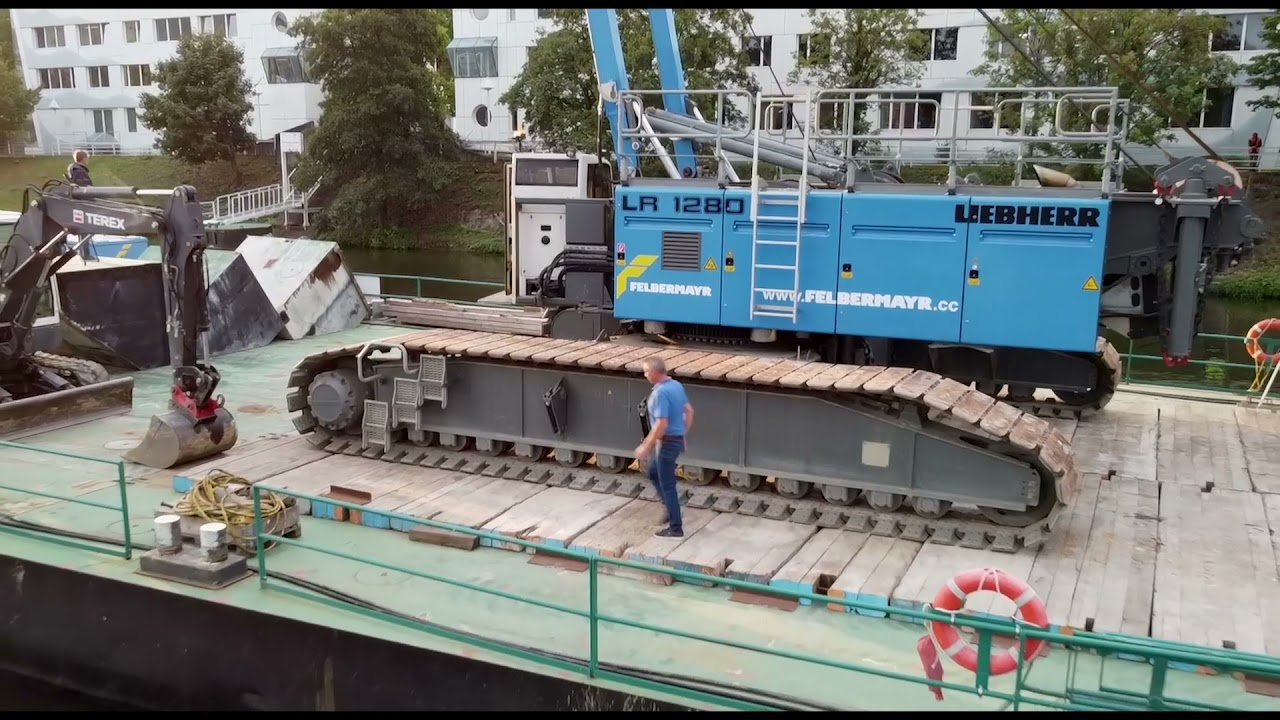A wealth of innovation for dam renovation
January 20, 2021 | Markus Lackner
To the north of Munich, part of the Isar River is diverted into the Mittlere-Isar Canal, before flowing back into Bavaria’s fourth longest river around 60 kilometres further downstream. A roughly 100-metre drop in altitude occurs between these points, which is used to generate electricity in seven power stations. However, the canal - which was built around 100 years ago - is getting on in years. Dam renovation measures are therefore necessary from time to time; usually with demands that are close to the limits of feasibility in terms of construction technology.
Damage to the canal
During the periodic condition survey, the public utility company Stadtwerke München identified an increased need for renovation at position 5 of the canal, meaning that repair measures were necessary. The damage was primarily identified in a canal section in the area of the Moosburg reservoir, where the old works canal flows into the Mittlere-Isar Canal. "Damage had occurred to the canal lining of the branch canal island," explains Hagn Umwelttechnik site manager Florian Pieringer. The dam lining was partly broken and leaking in places, a condition that could lead to erosion in the long run.
Difficulty of site access
"Our task was to develop and implement a concept to ensure stability, operational reliability and safety for at least 50 more years, in order to prevent the need for any further closures and dam renovations in this area," Pieringer explains the assignment. But even accessing the construction site was problematic. For example, the bridge leading to the area requiring renovation had a maximum payload of nine tonnes. For construction reasons, it was necessary for heavy goods vehicles weighing 60 tonnes to access the site. The customer therefore planned to initially spend two weeks constructing an access embankment. Furthermore, in order to drain the construction site a so-called cofferdam with surface sealing was required in the run-off water. From here, access to the construction site was also made possible via a ramp. In order to facilitate this, it was also necessary to restore a one-kilometre-long embankment back road. Only then was it possible to start the actual dam renovation work.
Construction concept for canal renovation
Because it is not possible to renovate such structures with standard solutions available from classic construction companies, the inventive spirit and innovative potential of Hagn Umwelttechnik was particularly in demand here. Numerous solutions were therefore discussed and feasibility-tested together with the customer, in the search for the most economically expedient option and the fastest realisation.
Particular problems in this respect were the maximum load capacity of the existing dam body of only twelve tonnes and the development of a special concrete for the surface seal. "The concrete had to be suitably soft to ensure optimum installation and surface properties, but still sufficiently resistant to the applicable mechanical stress," Pieringer describes the problem. Working in cooperation with the planners and the Technical University of Munich, a concrete formula was developed that would deliver these characteristics. The properties of the concrete were tested for their suitability in practice in three trial areas on the steep embankments, and the resultant findings were positive. It was therefore possible to start the comprehensive renovation measures.
Although the stability of the branch canal island had been previously secured with sheet pile walls in 2013, within the framework of urgent remedial measures, further damage to the construction fabric - which dates back over a century - had to be repaired after the canal was drained. "When building on existing structures, in particular those that were constructed around the turn of the century, it is often difficult to assess the works beforehand," Pieringer knows from experience. For example, the water-side embankment of the branch canal island had to be fundamentally rebuilt. This required significant additional time. "However, thanks to our commitment to planning and coordination, we succeeded in further consolidating the reputation of Hagn Umwelttechnik among customers and engineering firms," Pieringer is happy to report. It was therefore possible to meet the deadline of the end of 2020 for filling the canal, which also allowed the resumption of unrestricted power generation. To the great satisfaction of the customer and the Hagn Umwelttechnik team.








